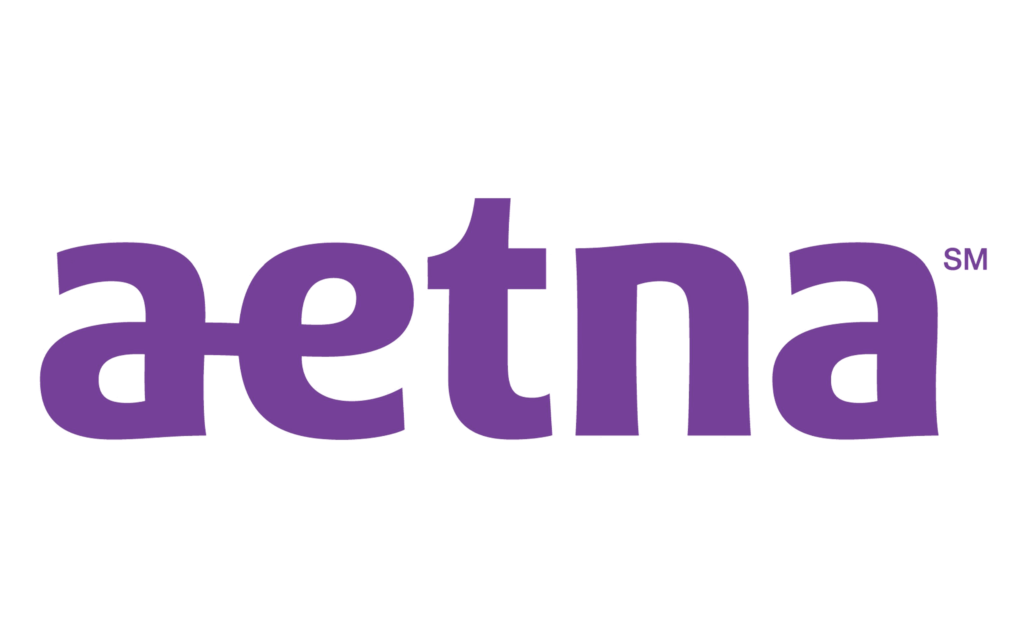Understanding Substance Use Disorders
Substance Use Disorders (SUDs) are a significant public health issue. Gaining an understanding of what they are, their prevalence, and the risk factors that contribute to their development is a crucial first step in discovering effective treatment options.
Definition and Prevalence
Substance Use Disorder is a condition characterized by an unhealthy pattern of substance use leading to significant distress or impairment. Over 20 million people in the United States have at least one SUD, making it a widespread concern (Cleveland Clinic). Among the various types of SUDs, Tobacco Use Disorder is the most common both worldwide and in the United States.
Risk Factors and Co-occurring Conditions
There are numerous risk factors that can make an individual more susceptible to developing an SUD. Genetics play a significant role, with studies showing that genetic factors are responsible for 40% to 60% of the vulnerability to any SUD. Having a first-degree relative with an SUD increases the likelihood of developing it.
Age is another critical factor. Adolescents who start using substances early are more likely to develop an SUD. For example, about 70% of people who began using substances at age 13 have an SUD compared to 27% who started at age 17 (Cleveland Clinic).
Mental health conditions often co-occur with SUDs, a situation known as a dual diagnosis. About half of people with a mental health condition will also have an SUD. In 2020, 17 million U.S. adults had a co-occurring mental health disorder and SUD, underscoring the importance of integrated treatment approaches that address both conditions simultaneously.
Understanding these risk factors and the prevalence of co-occurring conditions provides a foundation for addressing SUDs effectively. This knowledge is essential in identifying potential issues early and choosing the most appropriate treatment options for substance use disorder.
How to Help Someone with Substance Use Disorder (SUD)
Supporting someone with a substance use disorder can be challenging, but it’s a crucial part of their journey towards recovery. In this section, we’ll explore how to recognize the signs of SUD, communicate effectively, and provide ongoing support and encouragement.
Recognizing the Signs
Identifying the signs of SUD can be the first step in getting help for someone in need. Substance use disorders can manifest in various ways, but there are common signs which may indicate a problem. These may include:
- Changes in behavior or personality
- Neglect of responsibilities or decreased performance at work or school
- Engaging in risky behaviors, especially when under the influence of substances
- Social withdrawal or changes in social circles
- Physical changes, such as weight loss, changes in sleep patterns, or visible signs of substance use (e.g., track marks, bloodshot eyes)
Further, individuals who start using substances early are at a higher risk of developing SUD. About 70% of people who began using substances at age 13 have an SUD compared to 27% who started at age 17.
Communicating Effectively
When addressing SUD with a loved one, it’s important to communicate effectively. Here are some tips for fostering open and supportive discussions:
- Express concern rather than judgment: Use ‘I’ statements to share your worries and avoid blaming the individual for their behavior.
- Be prepared for resistance: Acknowledge their fears and concerns about treatment, and reassure them of your support.
- Provide information about SUD: Understanding the nature of the disorder can help to dispel myths and reduce stigma.
- Encourage treatment: Discuss the various treatment options for substance use disorder and encourage them to seek help.
Remember that recovery is a process, and it often requires multiple episodes of treatment and ongoing support. Relapse is common but should not be viewed as a failure; rather, it should be seen as an opportunity to reassess and modify the treatment plan to better meet the individual’s needs.
Providing Support and Encouragement
Providing ongoing support and encouragement can be vital in helping someone with SUD. Here are some ways you can offer support:
- Encourage involvement in productive activities: Engaging in hobbies, exercise, or social activities can provide a positive distraction from substance use.
- Offer emotional support: Let them know you’re there for them, regardless of where they are in their recovery process.
- Stay informed about their treatment plan: Being knowledgeable about their treatment can help you provide appropriate support and reinforce treatment goals.
- Encourage them to join a support group: Support groups can provide a sense of community and understanding, reinforcing that they’re not alone in their recovery journey.
Access to comprehensive treatment services, including medical, mental health, and social services, is essential for individuals with substance use disorders to achieve and maintain recovery. Coordination of care among different providers and services is crucial for ensuring continuity of care and addressing the various aspects of the individual’s needs.
Treatment Options for Substance Use Disorders
Substance Use Disorders (SUDs) are complex issues that require a multi-faceted approach to treatment. It is crucial to understand that recovery from SUDs often necessitates multiple episodes of treatment and ongoing support. Relapses should not be viewed as failures but as opportunities to reassess and modify the treatment plan. Below, three treatment options for substance use disorders are detailed: behavioral therapies, medication-assisted treatment, and a comprehensive care approach.
Behavioral Therapies
Behavioral therapies play a significant role in treating SUDs. They provide strategies to cope with drug cravings, avoid drugs and prevent relapse. These therapies can be delivered in outpatient, residential, or inpatient settings (PubMed).
Various forms of behavioral therapies include Cognitive Behavioral Therapy (CBT), Motivational Enhancement Therapy (MET), and Contingency Management (CM). CBT focuses on learning processes and helps patients understand and change problematic behaviors. MET aims to motivate individuals to change their behavior using internal resources. CM uses a reward system to reinforce positive behaviors like abstaining from drug use.
Medication-Assisted Treatment
Medications play a critical role in treating SUDs, helping to alleviate withdrawal symptoms, reduce cravings, and block the effects of drugs. The use of medications can be combined with behavioral therapies to increase the likelihood of successful treatment outcomes (PubMed).
Medication-assisted treatment (MAT) usually involves the use of FDA-approved medications in combination with counseling and behavioral therapies. This approach has proven to be clinically effective and significantly reduces the need for inpatient detoxification services for these individuals.
Comprehensive Care Approach
A comprehensive care approach to SUDs treatment ensures that all aspects of an individual’s needs are addressed. This includes medical, mental health, and social services. Coordination of care among different providers and services is crucial for ensuring continuity of care (PubMed).
Treatment for SUDs should be individualized, taking into account the type of substance used, the presence of co-occurring mental health disorders, and the individual’s social support system. Tailoring treatment plans to the specific needs of each individual is essential for achieving positive outcomes.
Access to comprehensive treatment services is essential for individuals with SUDs to achieve and maintain recovery. This approach underscores the importance of viewing addiction not just as a medical problem but as a complex interplay of factors that require a multifaceted response.
Role of Medications in Treating SUD
Medications play a vital role in the treatment of Substance Use Disorders (SUDs). They can help manage withdrawal symptoms, prevent relapse, and treat co-occurring conditions. This section will delve into the role of medications in treating alcohol and tobacco use disorders, opioid use disorders, and their advantages and limitations.
For Alcohol and Tobacco Use Disorders
Medications such as Naltrexone, Acamprosate, and Disulfiram are effective in reducing alcohol use (NCBI). Naltrexone is a competitive opioid antagonist that diminishes the rewarding aspects of drinking, while Disulfiram inhibits aldehyde dehydrogenase to create aversive effects when alcohol is consumed. Acamprosate modulates glutamate receptors to decrease cravings and withdrawal symptoms.
| Medication | Mechanism of Action |
|---|---|
| Naltrexone | Reduces rewarding aspects of drinking |
| Disulfiram | Creates aversive effects when alcohol is consumed |
| Acamprosate | Decreases cravings and withdrawal symptoms |
For Opioid Use Disorders
Effective treatment for opioid use disorders often involves medications like Methadone, Buprenorphine, and Naltrexone. These medications have been shown to reduce opioid use, opioid-related overdose deaths, criminal activity, and infectious disease transmission.
Methadone and Buprenorphine are agonist therapies that help to prevent withdrawal and cravings. Full agonist medications directly stimulate receptor sites in the brain, while partial agonists act like agonists but to a lesser degree. Full agonists are used as replacements for the abused drug, while partial agonists are sometimes used for detoxification (NCBI).
| Medication | Mechanism of Action |
|---|---|
| Methadone | Full agonist |
| Buprenorphine | Partial agonist |
| Naltrexone | Competitive opioid antagonist |
Advantages and Limitations
Medications for substance use disorders are generally used as adjuncts to psychosocial treatments. The combination of medications and behavioral treatments can work synergistically to attenuate substance use and reduce the probability of relapse.
However, like all treatments, the use of medications has its limitations. These include potential side effects, the risk of developing medication dependence, and the need for regular monitoring. Furthermore, medication effectiveness can vary between individuals, and not all individuals with substance use disorders will respond to the same medications. Therefore, a personalized approach to treatment is crucial, taking into account each individual’s specific needs and circumstances.
Understanding the role of medications in treating substance use disorders is a key component of finding the most effective treatment options for substance use disorder. With the right treatment plan, individuals with substance use disorders can embark on a journey towards recovery and regain control over their lives.
Implementing Behavioral Therapies
Behavioral therapies play a pivotal role in the treatment of substance use disorders. They focus on changing or managing the behaviors that lead to substance use and developing skills to manage the disorder. The following section will delve into three types of behavioral therapies: Cognitive-behavioral therapy, Motivational interventions, and Contingency management and relapse prevention.
Cognitive-Behavioral Therapy
Cognitive-behavioral therapy (CBT) has effectively demonstrated efficacy as both a sole treatment and as part of combination treatment strategies for substance use disorders. CBT has proven to be effective in treating alcohol and drug use disorders, with larger treatment effect sizes found for specific substances such as cannabis.
CBT for substance use disorders encompasses various interventions that can be administered in both individual and group formats. These interventions focus on overcoming the reinforcing effects of substances through operant learning strategies, cognitive and motivational elements, and skills building interventions (NCBI).
Motivational Interventions
Motivational interventions, such as Motivational Interviewing (MI), can function as stand-alone interventions or be combined with other treatment strategies for substance use disorders. MI targets ambivalence towards behavior change and has shown moderate efficacy for alcohol and drug use when compared to placebo or no-treatment control groups (NCBI).
Contingency Management and Relapse Prevention
Contingency management approaches, grounded in operant learning theory, involve the provision of non-drug reinforcers (e.g., vouchers for goods) following the demonstration of abstinence from substances. These approaches have shown efficacy for various substances, including alcohol, cocaine, and opioids. Reinforcement schedules can be stable or escalating based on the duration of abstinence.
Relapse prevention (RP) focuses on identifying and preventing high-risk situations for substance use. RP techniques challenge the patient’s expectations of the positive effects of substance use and provide psychoeducation to help the patient make more informed choices. RP has shown a small effect on reducing substance use and a large effect on improving overall psychosocial adjustment.
In conclusion, the implementation of these behavioral therapies can be instrumental in aiding individuals with substance use disorders. Keep in mind that the effectiveness of these treatment options for substance use disorder can vary, and it may be beneficial to combine different methods to achieve optimal results.
Accessing Treatment Services
Ensuring access to appropriate treatment services is a critical step in the journey towards recovery from substance use disorder. This process can often be complex, with various factors such as treatment availability, settings, and assistance from different organizations playing a significant role.
Treatment Availability and Settings
The specialized substance abuse treatment system is diverse and varies across different states and cities, with each having its own unique aspects and specialties. Substance abuse treatment can be delivered in various settings, including:
- Inpatient hospitalization: Patients live in the treatment facility and receive round-the-clock care.
- Residential treatment: Patients receive intensive treatment in a non-hospital setting.
- Intensive outpatient treatment: Patients live at home but spend a significant portion of their day in treatment.
- Outpatient treatment: Patients live at home and attend treatment sessions during the day.
These options provide flexibility and allow for the selection of a treatment plan that best suits the individual’s needs and circumstances.
Role of Primary Care Clinicians
Primary care clinicians play a vital role in the treatment of substance use disorders. Their responsibilities are not limited to the formal treatment program, but also include ongoing collaboration to monitor progress and prevent relapse. Clinicians provide support, guidance, and medical expertise, contributing significantly to the recovery journey.
Help From SAMHSA and VA
Several organizations offer help to individuals with substance use disorders, including the Substance Abuse and Mental Health Services Administration (SAMHSA) and Veterans Affairs (VA).
SAMHSA provides a National Helpline that offers free, confidential, 24/7 treatment referral and information service for individuals and families facing mental and/or substance use disorders.
The VA, on the other hand, offers treatment options that have proven to be very effective for most people, including evidence-based therapies, which are among the most effective treatments for substance use. These treatments are available at local VA medical centers.
Accessing treatment services for substance use disorder can be a complex process, but with support from health professionals, organizations like SAMHSA and VA, and the involvement of primary care clinicians, individuals can embark on a path to recovery.










